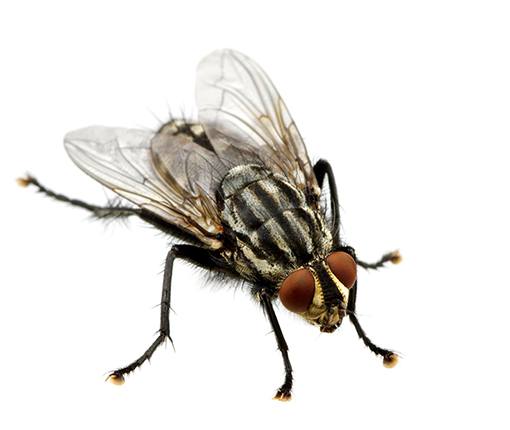
How to Get Rid of Filth Flies
Filth Flies Identification & Control Techniques

Filth flies such as the house fly can be nuisance pests, but are also harmful to humans and animals. The habits of filth flies favor the spread of bacteria and other disease-causing organisms.
Filth flies feed often and lay eggs on garbage, manure, and carrion. The flies then contaminate human foods and food preparation surfaces by landing on them.
The filth fly has evolved to live in close association with humans. They are identified with the disease-causing organisms of typhoid, paratyphoid, cholera, bacillary dysentery, infantile diarrhea, pinworm, roundworm, whipworm, hookworm, and tapeworms.
Filth Flies, House Fly, Blow Fly and Bottle Fly, Soldier Fly, Flesh Fly
Larger Filth Flies
-
Adult: Stout bodies and short legs
-
Larvae: Maggot
-
Food preferences: Manure, carrion, garbage
Smaller Filth Flies
-
Adult: Slender bodies and long legs
-
Larvae: Maggot or worm-like
-
Food preferences: Drain sludge, organic debris, rotting plant material
House Flies
House Flies may be found feeding and breeding in fresh manure, rotting fruits and vegetables, damp garbage, and damp decaying organic materials located outside the structure. When you find house flies inside, check cracks around windows, doors, and vents as possible entry points. It is essential to determine where the breeding sources are located and how they are entering the building. Rural areas where farms are present may be more problematic because breeding sites are greater than areas in an urban setting. In residential areas, pet manure, which is not picked up regularly, can be a breeding source for house flies.
Inspection for House Flies
Click Here: House Flies Control
Blow/Bottle Flies
Blow Flies / Bottle flies breed in damp organic material such as garbage and dead animals. Most of these pests found indoors actually originate from an outdoor source. Small numbers of Blowflies in a structure usually point to an outdoor source. If large numbers of these flies are found indoors, it may be a sign of an indoor infestation. Inside, look for signs of dead rodents or birds that may have been living in walls or crawl spaces or even living in lower cabinets and under major appliances. Outside, inspect the area for dead animals; nearby dumpsters and other garbage containers should be inspected.
Inspection for Blow Flies / Bottle Flies
Click Here: Blow Fly Control
Soldier Flies
When Soldier Flies are found in a building, it is usually the direct result of a nearby dumpster or other such garbage receptacles. Inspect dumpsters, compost piles, and garbage cans. The younger maggots will be buried in a compost pile or damp organic material and are more challenging to locate. During the last stage of the growth cycle, the maggots crawl to visible areas to pupate. The organic material in which the Soldier Fly breeds is always damp and usually in an advanced decomposition stage.
Inspection for Soldier Flies
Click Here: Soldier Fly Control







